Enter the Dragon
8.8 /10 1 Votes
95% Rotten Tomatoes Genre Action, Crime, Drama Duration | 7.7/10 IMDb 4.5/5 Blu-ray Writer Michael Allin Screenplay Michael Allin | |||||||||||||||||||||||||||||||||
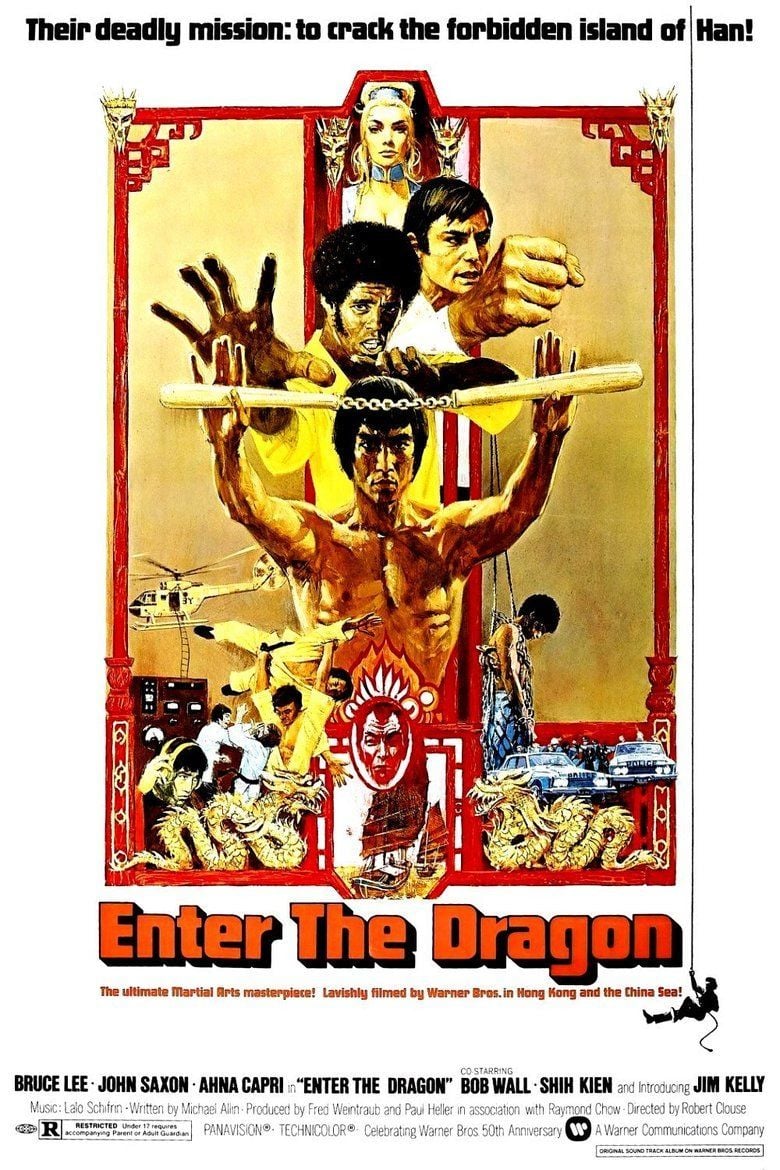 | ||||||||||||||||||||||||||||||||||
Languages English, Standard Cantonese Cast (Lee), (Williams), (Roper), (Tania), (Han (as Shih Kien)), Robert Wall (Oharra (as Bob Wall))Similar movies Teenage Mutant Ninja Turtles , Blackhat , Star Wars: Episode II - Attack of the Clones , The Matrix Revolutions , The Matrix Reloaded , Kill Bill: Vol. 1 Tagline Their deadly mission: to crack the forbidden island of Han! | ||||||||||||||||||||||||||||||||||
Enter the Dragon is a 1973 Hong Kong-American martial arts action film, directed by Robert Clouse, and starring Bruce Lee, John Saxon and Jim Kelly. This was Bruce Lee's final film appearance before his death on 20 July 1973 at age 32. The film was first released on 26 July 1973 in Hong Kong, six days after Lee's death.
Contents
- Baddest fight scenes ever enter the dragon bruce lee vs o hara
- Plot
- The Black Power movement
- Decolonization
- Blaxploitation and martial arts
- Marketing
- Soundtrack
- Production
- Music
- Box office
- Critical response
- Legacy
- DVD
- Blu ray
- References
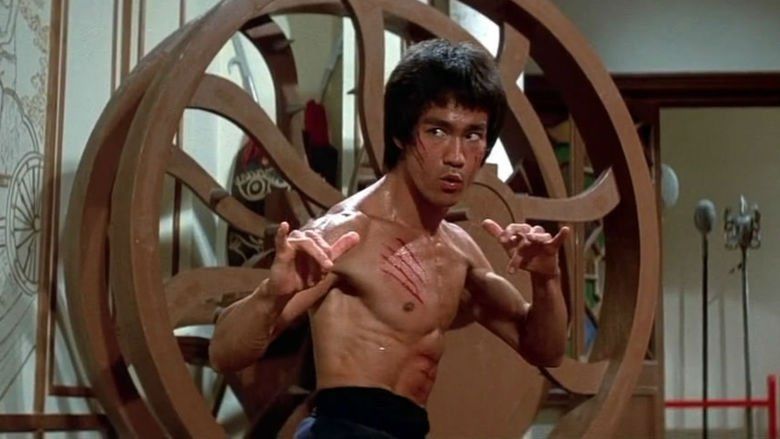
Often considered one of the greatest martial arts films of all time, in 2004 the film was selected for preservation in the United States National Film Registry by the Library of Congress as being "culturally, historically, or aesthetically significant".
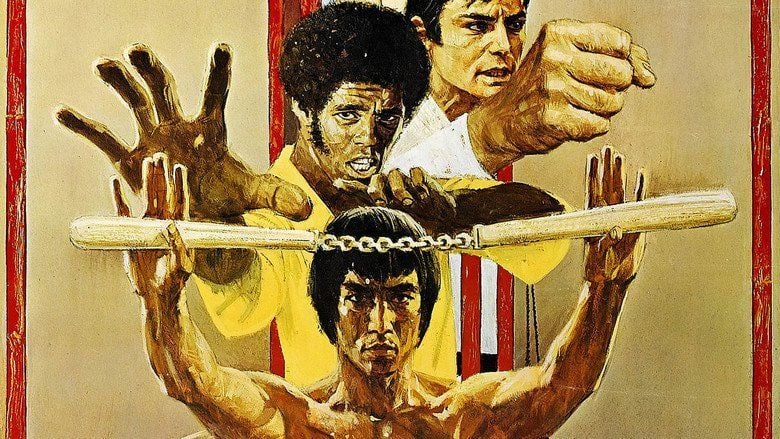
Baddest fight scenes ever enter the dragon bruce lee vs o hara
Plot

Lee (Bruce Lee), a highly skilled Shaolin martial artist from Hong Kong, is approached by Braithwaite, a British intelligence agent investigating suspected crime lord Han (Shih Kien). Lee is persuaded to attend a high-profile martial arts competition on Han's private island in order to gather evidence that will prove Han's involvement in drug trafficking and prostitution. Shortly before his departure, Lee also learns that his sister's killer, O'Hara (Robert Wall), is working as Han's bodyguard on the island. Also fighting in the competition are indebted gambling addict Roper (John Saxon) and fellow Vietnam war veteran Williams (Jim Kelly).
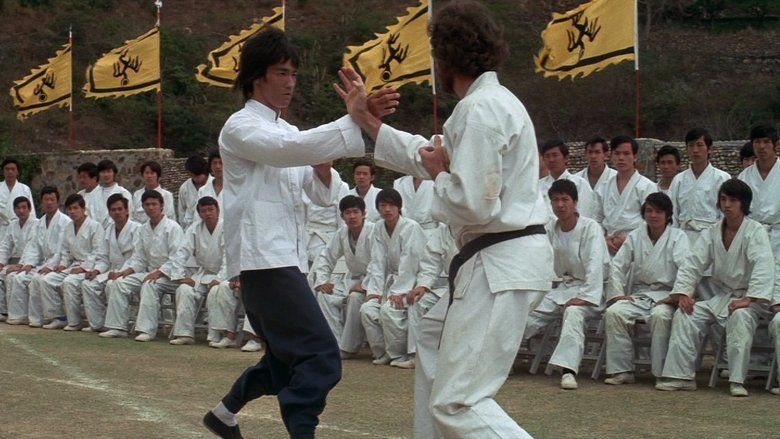
At the end of the first day, Han gives strict orders to the competitors not to leave their rooms. Lee makes contact with undercover operative Mei Ling (Betty Chung), and sneaks into Han's compound looking for evidence. He is discovered by several guards, but manages to escape. The next morning, Han has the guards publicly killed by chief guard Bolo (Bolo Yeung) for failing him. After the execution, Lee faces O'Hara in the competition and after an emotional battle ends up killing him. With the day's competition over, Han confronts Williams – who had also left his room the previous night to exercise – initially thinking him the intruder, and beats him to death when he refuses to cooperate. Han then reveals the scale of his drug operation to Roper in the hope that he will join his organization. He also implicitly threatens to imprison Roper, along with all the other martial artists who competed in Han's tournament in the past, if Roper refuses. Despite being initially convinced, Roper refuses after learning of Williams' fate.
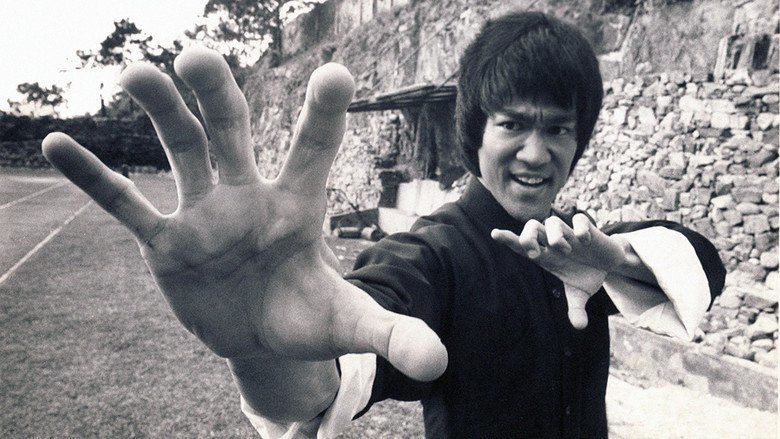
Lee sneaks out again that night and manages to send a message to Braithwaite, but is finally captured after a protracted battle with the guards. The next morning Han arranges for Roper to fight Lee, but Roper refuses. As punishment, he is forced to fight Bolo instead but manages to overpower and kill him after a grueling encounter. Enraged by the unexpected victory, Han commands his remaining men to kill Lee and Roper. Facing insurmountable odds, they are soon aided by the island's prisoners, who had been freed by Mei Ling. Han escapes, pursued by Lee, who finally corners him in a hidden mirror room. The mirrors give Han an advantage, but Lee breaks all the room's mirrors to reveal Han's location, and eventually kills him. Lee returns to the main battle, which is now over. A bruised and bloodied Roper sits victorious while the military finally arrive to take control of the island.
The Black Power movement
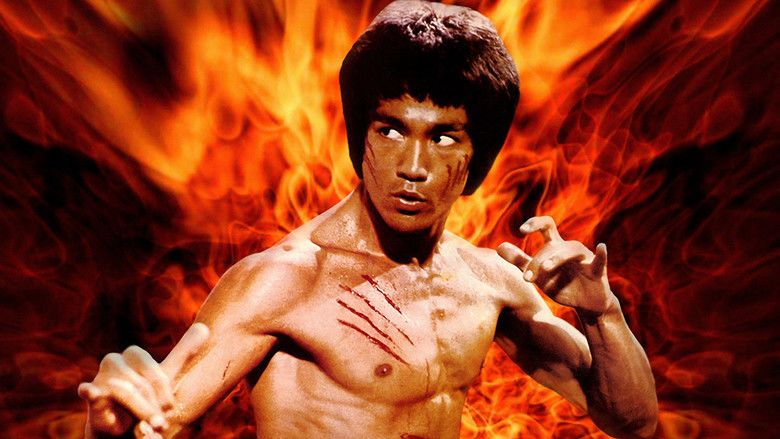
Many feel that there are some connections between Enter the Dragon and the Black Power movement. The Black Power movement, led by and large by Stokley Carmichael, was a racial empowerment movement. Carmichael believed in strengthening the black individual, as well as the black community, without the help of whites. Only then could true and successful integration take place. Carmichael did not believe in peaceful resistance, and advocated violence, stating that the Black community and the movement would achieve its goals by "whatever means necessary". Carmichael wanted to bring the country to its knees if it persecuted black men, and claimed the movement would back up this sentiment.
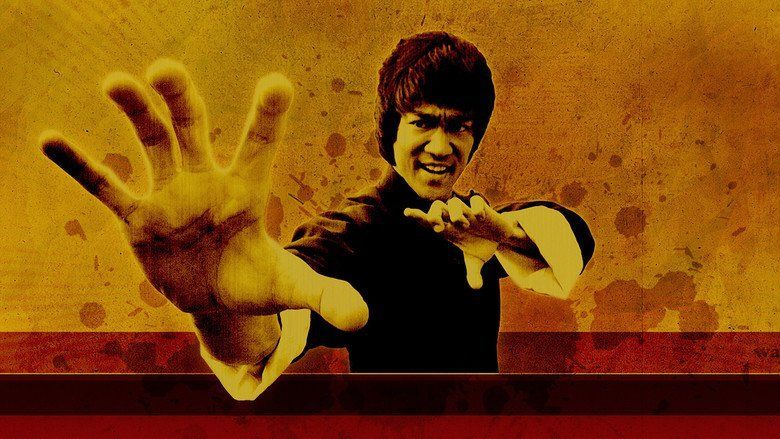
Themes that are present in the Black Power Movement are also often present in martial arts movies, such as Enter the Dragon. These themes include use of violence, self-reliance, self-protection, "beating the man", and success of the underdog: one typical scene in the beginning of the film is when Williams character gets harassed/intimidated, at night time, by two L.A.P.D. white officers. This can be thought of as the reason why martial arts films have such a large black audience. These minorities in the black community can take pleasure in seeing the enemy destroyed, and the underdog rising up. This is a sentiment often reiterated within the black community.
Decolonization
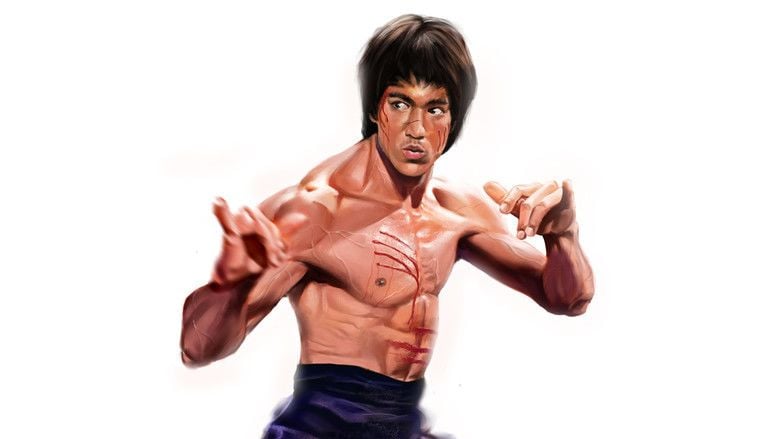
The end of World War II set decolonization into motion around the world. Many territories formed new states and claimed independence from European rule, attempting to put an end to colonialism. During colonialism, countries in Africa and Asia, as well as across the globe, were exploited for their labor and raw materials. The inhabitants of these lands were treated brutally and divided up by the European power. After retaliation, Europe lost most of its territories or let them slip away, and the newly independent nations came to fruition in the 1950s and 60s.
Many historians and film critics have explored the connection between martial arts films and decolonization. Many believe that decolonization was a major theme in many martial arts movies, as the "kung fu craze" started booming only a few decades after independence had been won. Some say it was the foundation of the films. Others argue that it was actually Bruce Lee who "opened up an allegorical link with the mass movement toward decolonization". The theory is that when analyzing a martial arts film in the context of decolonization, the fight scenes represent the conflict between imperialism and the popular resistance. The antagonist, Han, is the imperialist, while the hero, Bruce Lee, is the revolutionary. Most of these Kung Fu films end with the defeat of villain against all odds, which represents liberation. So, these films are meant to offer their audience a powerful narrative of liberation.
Blaxploitation and martial arts
The film was arguably the first to combine martial arts films with the Blaxploitation genre. Jim Kelly is thought to have portrayed the first Blaxploitation character that appeared in a martial arts movie. He would later go on to be one of the Blaxploitation genre's biggest stars. The success of the film, and the large black audience it attracted, caused other films to start incorporating these Blaxploitation characters more and more. Thus, the mingling of the genres was created.
Marketing
The film was heavily advertised in the United States before its release. The budget for advertising was over $1,000,000. It was unlike any promotional campaign that had been seen before, and was extremely comprehensive. In order to advertise the film, the studio offered free Karate classes, produced thousands of illustrated flip books, comic books, posters, photographs, and organized dozens of news releases, interviews, and public appearances for the stars. Esquire, The Wall Street Journal, Time, and Newsweek all wrote stories on the film.
Soundtrack
The soundtrack to the film was composed by Lalo Schifrin, who was also the composer for Mission: Impossible. He composed the score by sampling sounds from China, Korea, and Japan. The soundtrack was a huge success as well, selling over 500,000 copies. It earned a gold record.
Production
The scene in which Lee states that his style was the style of "Fighting Without Fighting" and then lures Parsons into boarding a dinghy is based upon a famous anecdote involving the 16th century samurai Tsukahara Bokuden.
Jackie Chan appears as a guard during the underground lair battle scene and gets his neck snapped by Lee. He also performed several stunts for the film, including the scene where Lee's character quickly climbs a rooftop at night. However, Yuen Wah was Lee's main stunt double for the film.
Sammo Hung appears in the movie in a brief fight scene against Lee during the opening of the film.
The title of the screenplay was originally Blood and Steel.
Enter The Dragon was filmed without sound. All of the dialogue and effects were dubbed in during post-production.
Music
Argentinian musician Lalo Schifrin composed the film's musical score. While Schifrin was widely known at the time for his jazz scores, he also incorporated funk and traditional film score elements into the film's soundtrack.
Box office
In 1973, Enter the Dragon grossed an estimated $21,483,063 in North America, on a tight budget of $850,000. It was one of the most successful films of 1973.
In Hong Kong, the film grossed HK$3,307,536—huge business for the time, but substantially less than Lee's Fist of Fury and Way of the Dragon. In India, the movie opened to full houses.
Worldwide, the film grossed $90 million, including $65 million outside of the United States.
Critical response
The film was well received by critics and is regarded by many as one of the best films of 1973. Critics have referred to Enter the Dragon as "a low-rent James Bond thriller", a "remake of Dr. No" with elements of Fu Manchu. J.C. Maçek III of PopMatters wrote, "Of course the real showcase here is the obvious star here, Bruce Lee, whose performance as an actor and a fighter are the most enhanced by the perfect sound and video transfer. While Kelly was a famous martial artist and a surprisingly good actor and Saxon was a famous actor and a surprisingly good martial artist, Lee proves to be a master of both fields."
Many additional acclaimed newspapers and magazines reviewed the film as well. Variety complimented multiple aspects of the film, claiming that film was overall "rich in the atmosphere", the music score was "a strong asset" and the photography as interesting. Additionally, The New York Times gave the film a rave review. The review stated "The picture is expertly made and well-meshed; it moves like lightning and brims with color. It is also the most savagely murderous and numbing hand-hacker (not a gun in it) you will ever see anywhere."
The film currently holds a 95% approval rating on the review aggregate website Rotten Tomatoes, with 43 reviews counted and an average rating of 7.8/10. In 2004, the film was deemed "culturally significant" by the Library of Congress and selected for preservation in the National Film Registry.
The film also ranks No. 474 on Empire magazine's 2008 list of The 500 Greatest Movies of All Time.
Legacy
The film has been parodied and referenced in places such as the 1976 film The Pink Panther Strikes Again, the satirical publication The Onion, the Japanese game-show Takeshi's Castle, and the 1977 John Landis comedy anthology film Kentucky Fried Movie (in its lengthy "A Fistful of Yen" sequence, basically a comedic, note for note remake of Dragon) and also in the film Balls of Fury. It was also parodied on television in That '70s Show during the episode "Jackie Moves On" with regular character Fez taking on the Bruce Lee role. Several clips from the film are comically used during the theatre scene in The Last Dragon.
In August 2007, the now defunct Warner Independent Pictures announced that television producer Kurt Sutter would be remaking the film as a noir-style thriller entitled Awaken the Dragon with Korean singer-actor Rain starring. It was announced in September 2014 that Spike Lee will work on the remake. In March 2015, Brett Ratner revealed that he wanted to make the remake.
The little-known 1985 Nintendo arcade game Arm Wrestling contain voice leftovers from the film, as well as their original counterparts.
The popular video game Mortal Kombat borrows multiple plot elements from Enter The Dragon.
The popular 1980s martial arts video game Double Dragon features two enemies named Roper and Williams, a reference to the two characters Roper and Williams from Enter The Dragon.
DVD
Universe (Hong Kong)
Fortune Star – Bruce Lee Ultimate DVD Collection (Hong Kong)
Zoke Culture (China)
Warner – 30th Anniversary Special Edition (America)
Warner – 25th Anniversary Special Edition (America)
Warner – Limited Edition (United Kingdom)
Blu-ray
Kam & Ronson (Hong Kong)
Warner (North America and South America)
Warner (40th Anniversary Edition – Remastered)
References
Enter the Dragon WikipediaEnter the Dragon IMDbEnter the Dragon Rotten TomatoesEnter the Dragon Blu-ray.comEnter the Dragon themoviedb.org
